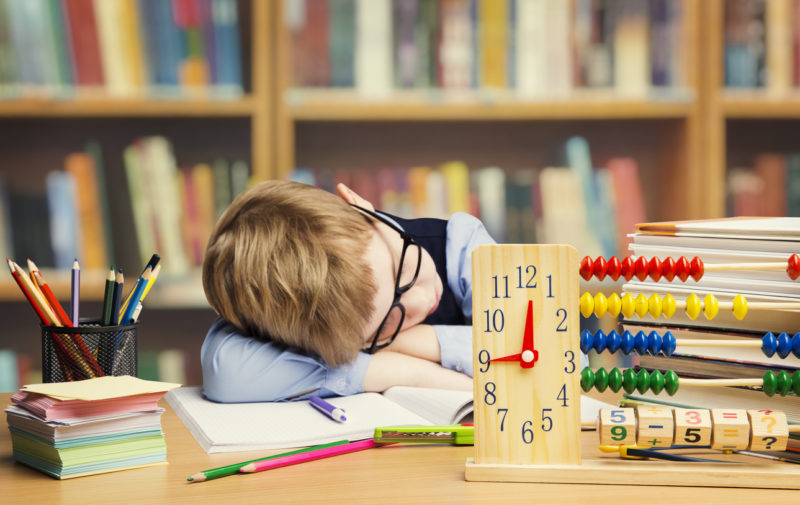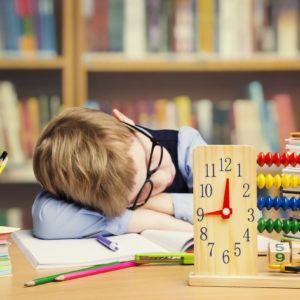
Ah, burnout. We’ve all felt it, and some of us have become even more acquainted with it in the last couple of years (I don’t think I need to explain why). We feel exhausted, uninspired, overwhelmed and completely at a dead-end. Things that used to bring us joy are now making us feel anxious and full of dread.
Sound familiar?
If it does, you’re definitely not alone. Anyone can experience burnout, even if they love what they do; it’s just as common among athletes and artists as it is among doctors and scientists. Passionate teachers can (and do) feel burnt out by teaching; parents can experience parental burnout, and kids can feel burnout just from the stress of being a kid.
This tells us that burnout isn’t about losing interest in your responsibilities, and it’s not about a lack of motivation, either. In fact, people who are incredibly passionate about what they’re doing may even be more likely to experience burnout, as it’s the result of exerting too much energy without the necessary periods of rest.
Psychologists define burnout as a state of complete exhaustion — whether physical, mental, emotional, or a combination of the three — which “results from performing at a high level until stress and tension, especially from an overburdening workload, take their toll.”
In other words, burnout is what happens when we push ourselves beyond our limit; when we try to do so much all at once that we end up losing steam and being unable to do anything at all.
What does this mean for kids?
When kids are overwhelmed by stress, they can experience burnout too — and they may not know how to deal with it on their own.
For some kids, the pressures of school and academics can become overwhelming to the point of burnout. Others may feel burnt out by social expectations or having too many responsibilities on their plate. (It’s important to note, too, that kids who think or learn differently may have a higher risk of experiencing burnout, as they often feel the need to exert more energy than their peers in an effort to “keep up” academically or socially.)
Kids may not always know how to prioritize their time, or to recognize when they’re starting to become overwhelmed — which is why it’s important for the adults in their lives to be there for guidance and support.
And even if kids aren’t experiencing burnout of their own, they can still be affected by the burnout that their parents and teachers are feeling. Because when we as adults feel totally exhausted, we definitely can’t be the parents and teachers we want to be for our kids.
Overwhelming stress and burnout is leading to more and more teachers choosing to leave their profession. And parents who experience parental burnout are more likely to report having more conflict at home, as well as increasingly strained relationships with their partners and children.
The effects of burnout are very real for every kid who has an exhausted and overwhelmed parent or teacher. That’s why it’s our responsibility to recognize burnout so that we can stop it in its tracks — not just for our own well-being, but also for that of our kids.
Here are four tips to help you (and your child) avoid burnout:
1. Understand your own warning signs of imminent burnout.
Everyone experiences burnout differently, but most of us start showing some signs of oncoming burnout before it’s too late. If we can learn to understand what burnout looks like in our own lives (and help our kids learn to do the same), we can recognize the signs and stop burnout in its tracks.
Some common warning signs of burnout include anxiety and increased procrastination. If something that once felt exciting and motivating now makes you (or your kids) groan with dread, it’s a pretty strong indication that burnout isn’t too far off.
And that’s not all. Irritability, brain fog, and an inability to focus can also be warning signs of burnout. Burnout is usually also accompanied by feelings of apathy or negativity — the things you used to care about might not seem so great anymore.
So what do you do when you see a wave of burnout coming your way? You take a break.
2. Schedule time to rest and relax.
When everything seems urgent and your to-do list is overflowing, it can feel counterproductive (not to mention impossible) to stop everything and relax. But human beings are not productivity machines — and even if we were, machines need to recharge their batteries, too, after all.
Rest is a vital part of productivity. Without it, we have no hope of getting anything done whatsoever. So to avoid reaching a state of burnout (where our bodies and minds give us no choice but to stop working, usually at a very inconvenient time), we can make sure our to-do lists include prioritizing some time to do absolutely nothing.
And this goes for kids, as well. Somewhere between all of their academic classes, extracurriculars, and social and family responsibilities, kids should have some time in their schedule just for rest. (And no, doing homework at the kitchen table doesn’t count as resting.) Without having enough time to relax, they’ll become burnt out on all of the things they used to love — or, in the case of homework, the things they used to do without complaint — and all that hard work will have been for nothing.
3. Find a healthy outlet for stress that you can use regularly.
There are lots of healthy ways to relieve some of your stress on a regular basis and avoid burnout altogether: social, physical, and creative outlets can all be highly beneficial.
Ever tried journaling, knitting, or painting as a way to work through your stress? Maybe now is the time to give it a shot. You might also try talking to a therapist, or joining a social group that meets regularly. Maybe you like to let off steam by going for a run after work, or by attending yoga classes a few times per week.
Of course, kids can benefit from these stress-relieving outlets, too. Joining a sports team, picking up a paintbrush or musical instrument, and engaging in social free play can all be a great way for kids to recharge.
Just remember: these activities should help to relieve some of your stress, not add to it! Choose something that feels natural or exciting to you — and if it starts to feel like a chore, don’t be afraid to change things up and try something new.
4. Know when to say “no.”
We teach our kids how to say “no” to drugs, to peer pressure, and to getting in cars with strangers. Maybe it’s time to add one more thing to the list: saying “no” to too much stress.
Of course, stress isn’t all bad. A little bit of stress can be highly motivating, and learning to cope with stress in a healthy way is a valuable life skill that every kid should learn.
But when kids are already overwhelmed, learning how to say “no” to additional stressors is just as valuable (and, let’s face it: many of us may need to learn this as adults, as well). Understanding the limits and boundaries of what you can accomplish — and being able to communicate that with others — is one of the most foolproof ways to make sure you never have too much on your plate.
Of course, some stress is beyond our control, and we can’t always avoid — or even anticipate — the things that ultimately contribute to burnout.
But we can practice showing ourselves some grace and forgiveness, even when we’re not doing things perfectly. We can remind ourselves that the perfect parent or teacher can’t possibly exist, and that learning to be better versions of ourselves every day is one of the most valuable things we can teach our kids to do.
We can take a deep breath, take some time to rest, and remind ourselves that we’re doing our best — and that’s enough.


